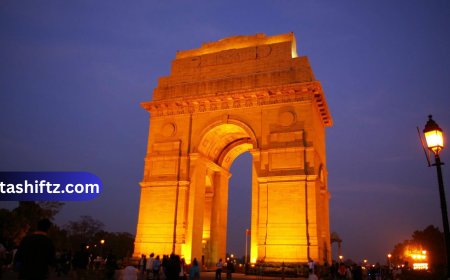The India-Pakistan War: A Historical Overview of Conflict and Consequence
Introduction
The India-Pakistan conflict remains one of the most enduring and complex rivalries in modern geopolitical history. Born out of the tumultuous partition of British India in 1947, the two South Asian neighbors have engaged in multiple wars and countless skirmishes, each shaping the political and military landscape of the region.
This blog post delves into the origins, key wars, notable battles, diplomatic consequences, and the path toward peace between India and Pakistan. Through detailed tables and lists, we aim to offer a comprehensive overview of this ongoing rivalry that continues to influence global diplomacy.
Historical Background
The Partition and Birth of a Rivalry
The roots of the India-Pakistan conflict trace back to the Partition of British India in 1947. This division led to the creation of two sovereign nations—India and Pakistan. The partition was marred by communal violence and mass displacement, particularly in Punjab and Bengal.
A major point of contention from the very beginning was the princely state of Jammu and Kashmir, which became the flashpoint for the first war between the two newly formed nations.
Major India-Pakistan Wars
India and Pakistan have fought four major wars: in 1947–48, 1965, 1971, and 1999 (Kargil War). Each conflict has had far-reaching consequences on regional stability, diplomacy, and military strategy.
Table: Overview of India-Pakistan Wars
| War | Year | Cause | Outcome | Territorial Impact |
|---|---|---|---|---|
| First War | 1947–48 | Dispute over Jammu and Kashmir | Ceasefire mediated by UN | LoC established |
| Second War | 1965 | Operation Gibraltar and Kashmir issue | Stalemate, Tashkent Agreement signed | Status quo maintained |
| Third War | 1971 | Bangladesh Liberation War | Indian victory, creation of Bangladesh | East Pakistan became Bangladesh |
| Kargil War | 1999 | Infiltration in Kargil by Pakistani troops | India regained occupied territories | Tactical Indian victory |
Key Wars in Detail
1. First India-Pakistan War (1947–48)
-
Trigger: Pakistan-backed tribal militias invaded Kashmir.
-
Response: The Maharaja of Kashmir acceded to India, prompting Indian military intervention.
-
Outcome: A UN-mandated ceasefire resulted in the creation of the Line of Control (LoC). Pakistan retained control of what is now known as Azad Kashmir.
2. Second India-Pakistan War (1965)
-
Trigger: Pakistan’s Operation Gibraltar aimed to infiltrate forces into Jammu and Kashmir.
-
Key Battles: Battles of Asal Uttar and Haji Pir Pass.
-
Outcome: Ceasefire agreement brokered by the USSR and signed at Tashkent, led to return of pre-war positions.
3. Third India-Pakistan War (1971)
-
Trigger: Civil war in East Pakistan and the subsequent refugee crisis in India.
-
India’s Role: Supported the Mukti Bahini, a Bengali nationalist force.
-
Outcome: Pakistan surrendered on December 16, 1971, leading to the creation of Bangladesh. Over 90,000 Pakistani troops were taken as prisoners of war.
4. Kargil Conflict (1999)
-
Trigger: Pakistani soldiers and militants occupied Indian positions in the Kargil sector of Jammu & Kashmir.
-
Indian Response: Launched Operation Vijay to flush out the infiltrators.
-
Outcome: Indian forces successfully reclaimed territory, and Pakistan faced international condemnation.
Major Factors Behind the Conflict
Political and Religious Differences
-
Partition created a Hindu-majority India and a Muslim-majority Pakistan, setting a foundation for religious and ideological rivalry.
-
The Kashmir issue continues to be a symbol of political sovereignty for both nations.
Military Build-up
-
Both countries have consistently increased defense spending, particularly after their nuclear tests in 1998.
-
Presence of nuclear weapons has changed the nature of warfare from full-scale to proxy and diplomatic confrontations.
List: Consequences of the Wars
-
Human Casualties and Displacement
-
Thousands of soldiers and civilians lost their lives in each conflict.
-
Wars caused widespread displacement, especially in Kashmir and Bangladesh.
-
-
Economic Strain
-
Wars drained financial resources, impacting national development.
-
-
Rise in Militancy
-
Post-war environments led to increased insurgency, especially in Kashmir.
-
-
Nuclear Arms Race
-
Both nations developed nuclear capabilities as deterrents.
-
-
International Mediation
-
Major powers like the US, USSR (Russia), and China often intervened diplomatically.
-
Diplomatic Efforts and Peace Talks
Tashkent and Simla Agreements
-
Tashkent Agreement (1966): Brokered by the Soviet Union after the 1965 war, it restored peace but left Kashmir unresolved.
-
Simla Agreement (1972): Signed after the 1971 war, it emphasized bilateral dialogue and non-interference.
Lahore Declaration (1999)
-
Signed just months before the Kargil War, this agreement emphasized nuclear risk reduction and peaceful resolution of disputes. It was quickly undermined by conflict.
Ongoing Track II Diplomacy
-
Cultural exchanges, people-to-people contact, and unofficial dialogues continue to be advocated by peace activists on both sides.
Modern Dynamics of the Conflict
Terrorism and Cross-Border Tensions
Since the early 2000s, the conflict has evolved from full-scale wars to proxy battles and terrorist attacks, notably:
-
2001 Indian Parliament attack
-
2008 Mumbai attacks
-
2016 Uri attack and India’s surgical strikes
-
2019 Pulwama attack and Balakot airstrikes
These incidents have heightened tensions and made diplomatic normalization more difficult.
The Role of Technology and Media
-
Social media and television have intensified nationalist narratives.
-
Cyber warfare and misinformation campaigns are the new fronts in this long-standing conflict.
Path to Peace: Is It Possible?
While historical wounds and political motives have kept the conflict alive, several factors could pave the way for resolution:
-
Youth Engagement: A generation focused on development over conflict.
-
Economic Cooperation: Trade agreements and shared development goals.
-
Regional Stability: A peaceful South Asia benefits all neighboring countries.
-
International Pressure: Global powers urging for restraint and dialogue.
Conclusion
The India-Pakistan conflict is deeply rooted in history, identity, and unresolved disputes. While wars and violence have defined much of the past, there remains hope for a peaceful future. Through education, dialogue, and diplomacy, both nations can work towards a resolution that honors their histories and secures peace for future generations.






























